Compassion
WORKSHEETS & LINKS
Building Self-Compassion workbooks (Centre for Clinical Interventions) - I use these a LOT with clients
Take the Self-Compassion test (Dr Kristin Neff)
Soothing Rhythm Breathing 5 minutes - CFT - download exercise in PDF
Compassionate Colour
3 minutes - CFT - download exercise in PDF
Gentle Lovingkindness
10 minutes
LOVINGKINDNESS MEDITATIONS (for you to try)
:: Insight Timer - Simone Mound - Loving Kindness meditation (thank you, Sophie)
:: Insight Timer - Rev. Simon Shadowlight - Lovingkindness meditation and Hierarchy of Needs (thank you, Sophie)
:: Insight Timer - Kate James - Lovingkindness meditation (thank you, Sophie)
GLIMMERS

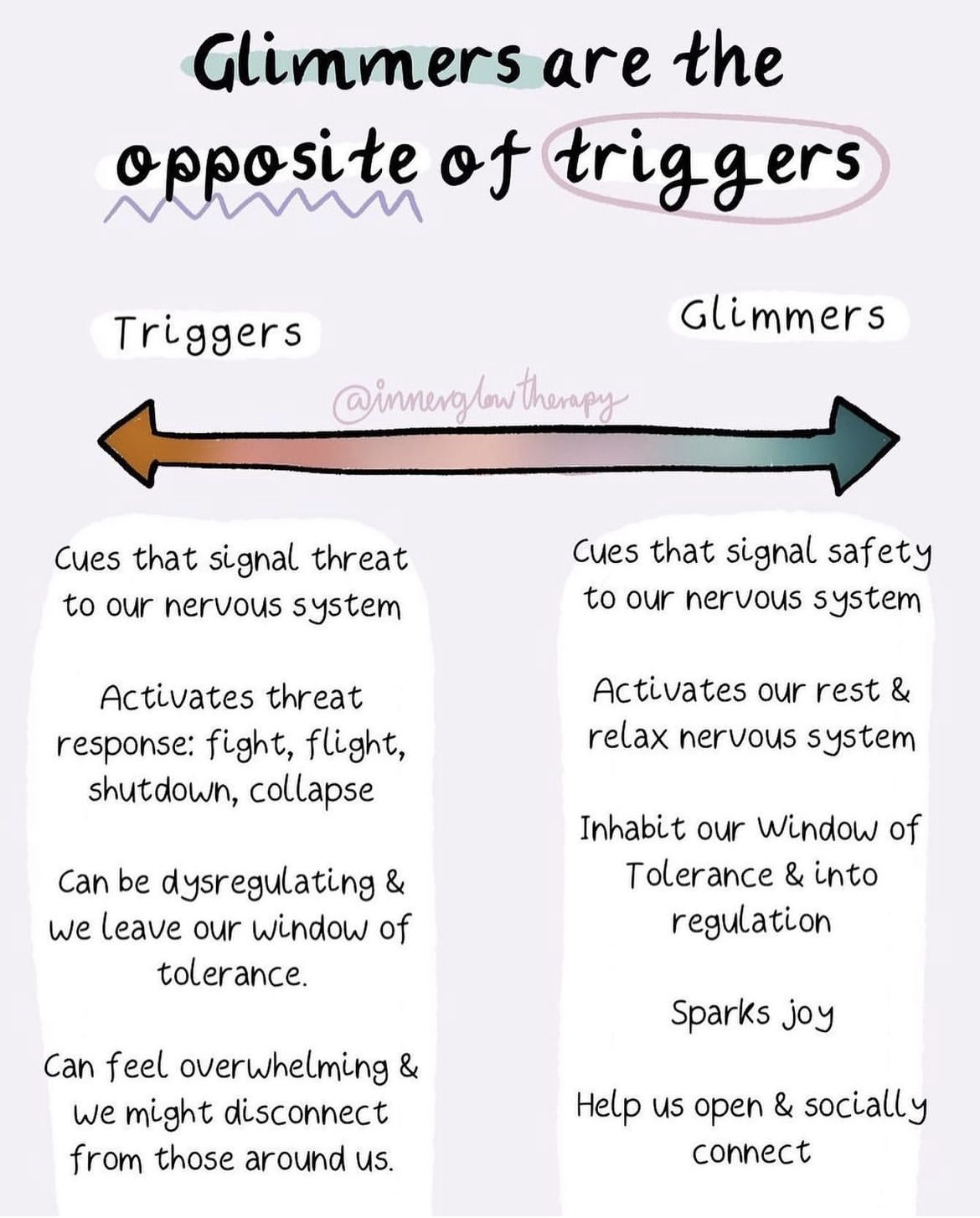
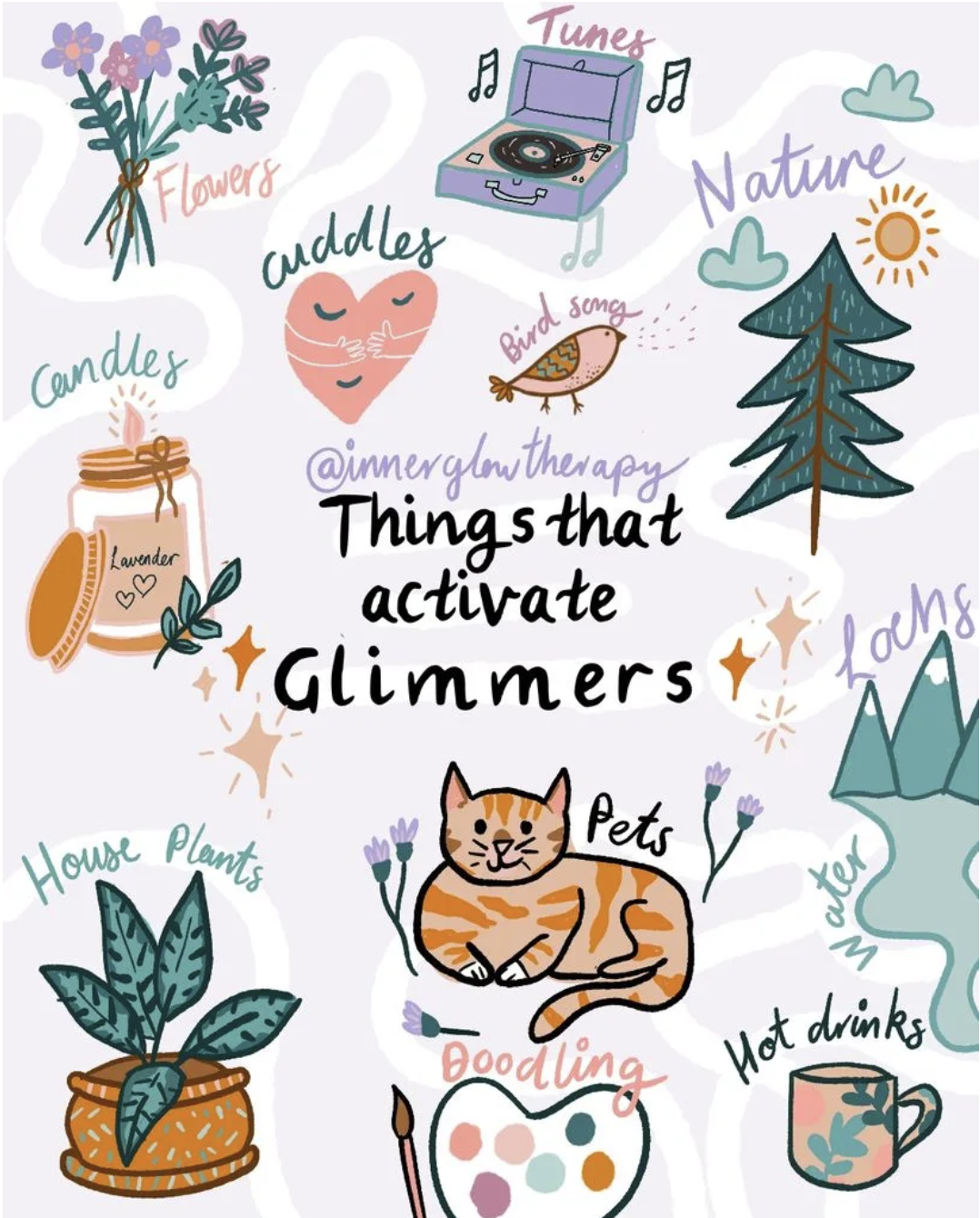
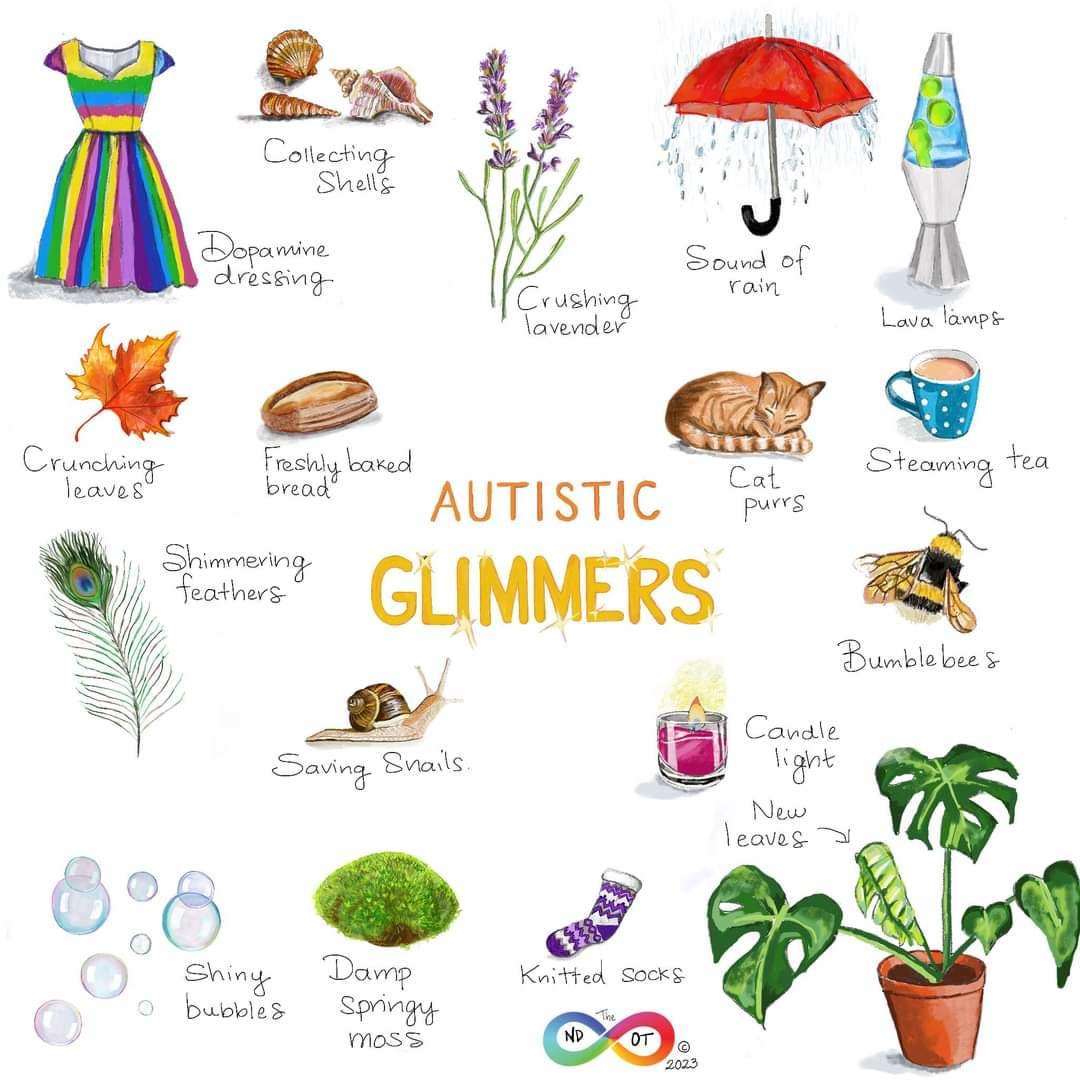
WHAT ARE GLIMMERS?
Glimmers are the micro-moments in your day that spark a sense of joy and wellbeing. They are the things which help to tell our bodies that we are safe, we are ok - and they are all different, for each and every one of us!
Glimmers come from the work of Deb Dana, one of the many psychotherapists who work in the field of trauma and polyvagal theory.
Polyvagal theory, in simple terms, is a framework originally developed by Dr. Stephen Porges to understand how our nervous system influences our responses to stress and social interactions.
It's based on the idea that our nervous system has three main states:
1. Safe and Social: this happens when we feel safe and connected to others. Our body and mind are at ease, allowing us to engage in social interactions and build relationships.
2. Fight or Flight: this is our body's response to perceived danger. It prepares us to either fight the threat or run away from it. Our heart rate increases, and we become alert and ready for action.
3. Freeze or Shutdown: then when our body believes the threat is overwhelming, it will cause us to "freeze" or "shut down." This is often seen in situations of extreme stress or trauma, where we quite literally (physically) freeze, like rabbits caught in the headlights of a speeding car - or where we dissociate from our surroundings.
When it comes to chronic pain and anxiety, polyvagal theory helps us by offering insights into how these conditions are connected to our nervous system's response to stress. Chronic pain and anxiety can often be related to an overactive "fight or flight" response or difficulties in shifting into the "safe and social" state. When our bodies remain in a state of chronic stress or alertness, it can contribute to physical pain and heightened anxiety.
"Glimmers" can support this by serving as reminders of moments when our nervous system has shifted into the "safe and social" state.
These are micro-moments of relief, positivity, or safety, even when we're in the midst of pain episodes or attacks of anxiety.
Acknowledging and focusing on these "glimmers" can help us to regulate our nervous system, reduce the intensity of pain and anxiety, and promote healing.
Essentially, "glimmers" provide a pathway for us to access the soothing and calming aspects of the "safe and social" state, which can be healing for both our minds and bodies.
Polyvagal theory helps us understand how our nervous system responds to stress, and "glimmers" support individuals with chronic pain and anxiety by encouraging shifts towards the calming "safe and social" state, which can alleviate symptoms and promote wellbeing.
:: Lovely article from Hello Magazine Glimmers - what are they, and how to spot them
:: Inner Glow Therapy (practitioner)

BOOK RECOMMENDATIONS

1:1 session - £55
Coaching / CREATIVE ARTS / HypnOTHERAPY
(60 mins)
Get in touch
Upcoming Live Classes
There are no results found.
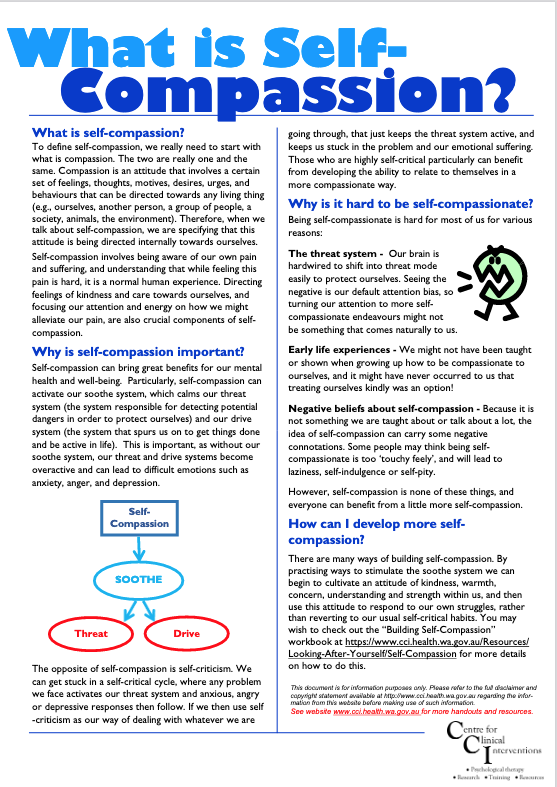
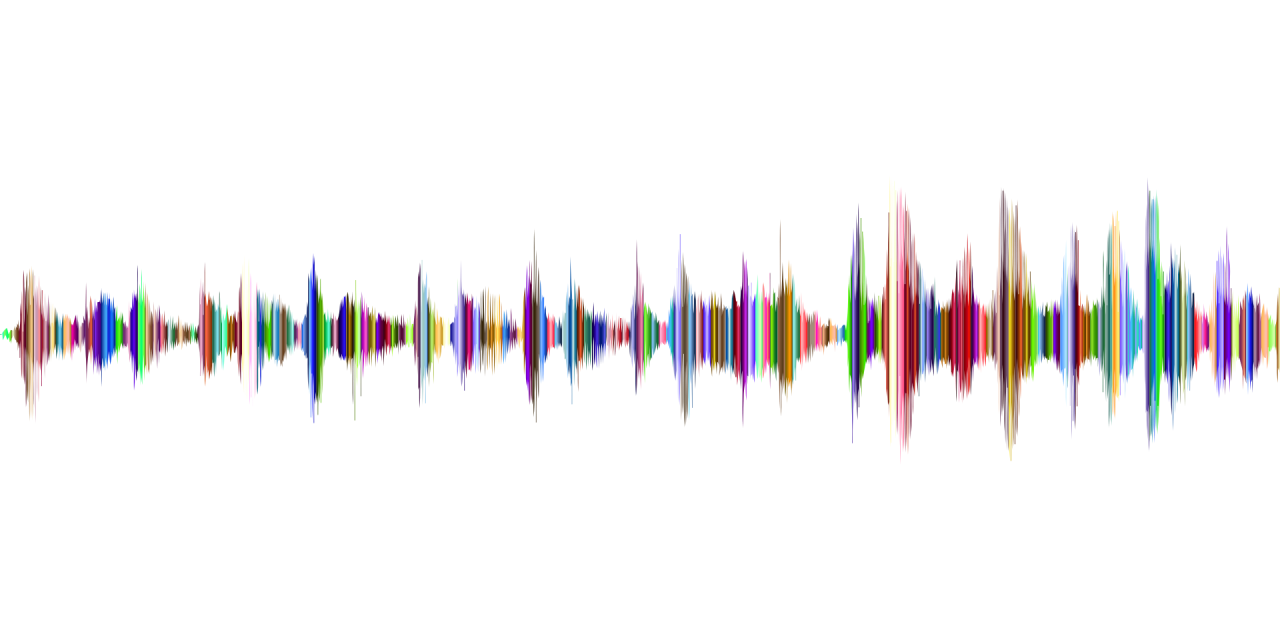
64b13e53936b5_lg.png)

